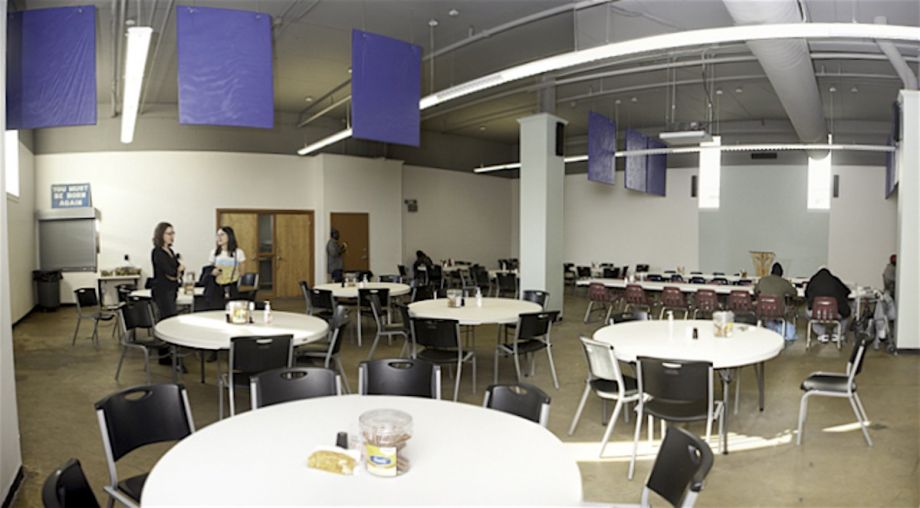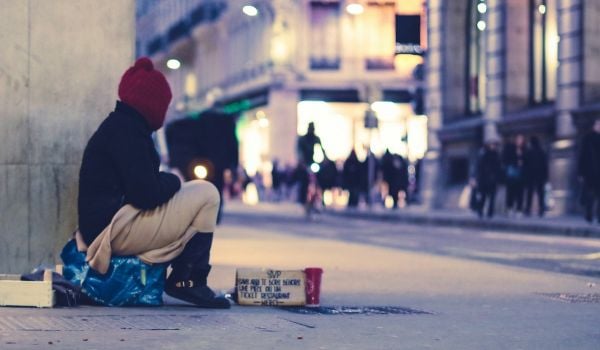The neighborhood just north of Vine Street and east of Broad in Philadelphia has become contested space. Once home to factories and warehouses, it slid into decline starting in the 1950s as the factories decamped for newer facilities in cheaper locations. The transformation of Vine Street into a 10-lane boulevard in 1955 cut the district off from the rest of the city center and turned it into an annex of the city’s skid row to its east. At the same time, the residents of the compact and crowded Chinatown neighborhood just south of Vine began to stake out turf in the area with the construction of a Catholic church and school serving the Chinese community.
Then, in the 1990s, the boulevard was turned into a sunken freeway, and the floodgates opened to a wave of redevelopment. New housing was built for an expanding Chinatown. The abandoned factories became loft apartments that appealed to a young, affluent population. And the people who moved into those apartments felt ill at ease when they walked past the homeless men outside soup kitchens and shelters.
The men who came to the oldest of those shelters, the Sunday Breakfast Rescue Mission, could feel the unease. So could Gayle Isa, executive director of the Asian Arts Initiative, located a half block away from the Sunday Breakfast mission.
As the mission of the Asian Arts Initiative is “creating community through the power of art,” she saw in the situation at Sunday Breakfast an opportunity.
“The homeless presence in the neighborhood causes tension with the aspirations of others over what they’d like to see in the neighborhood,” Isa says. “One of the things AAI has been asking is ‘How can we make investments in the neighborhood that benefit everybody?’”
That led AAI to make an effort to get to know the people who worked at and patronized Sunday Breakfast, which has operated at various locations in this district since its founding in 1878. That effort began with the stationing of an artist-in-residence at the mission, but AAI wanted to make a more lasting difference in the neighborhood.
They ended up doing that with some paint, a few windows, some round tables and some fabric banners.
“AAI contacted me about collaborating on a project without any specifics,” says Nick Lordi, who runs the dining hall at Sunday Breakfast. “After brainstorming a few ideas, we decided that we wanted something that would [benefit] the majority of our population and have a lasting impact. We wanted to do a project that wouldn’t be taken down in a week or two and would continue to improve the quality of life for our guests.”
From this impulse sprang an “art project” of a different sort: a makeover of the Sunday Breakfast dining hall.
The project became a true partnership involving AAI, the staff and the guests at Sunday Breakfast, and an architect at one of Philadelphia’s most respected architectural firms, Cecil Baker + Partners.
Nancy Bastian, a partner at the firm, has extensive experience working with clients who serve society’s most vulnerable. Among her larger recent projects was rejuvenating the People’s Emergency Center, a shelter and service agency for homeless women in West Philadelphia. So it was something of a no-brainer that Isa reached out to her.
“Gayle called and said, ‘Nancy, I’m looking for an architect who might donate time to make over the homeless shelter,’ and I said, ‘Fine,’ and she was like, ‘That’s too easy.’”
The slightly harder part was achieving the desired transformation on a tiny budget, but that didn’t faze Bastian much at all. “You can make a huge difference in people’s lives with a project like this, because [the guests at Sunday Breakfast] aren’t used to having nice things or having people doing things to make their lives a little better.” (According to Isa, the entire project cost $25,000, which the project team was able to stretch with “significant donations of discounted and pro bono labor.”)
For their part, the guests already had some ideas about what might achieve that goal. Lordi met with some of the men in the mission’s long-term program to sound them out on possible improvements to the dining hall, which was a large, two-story-high, windowless room with cinder block walls and an industrial steel ceiling. “They suggested round tables, paint and music, among other things,” he says.
The aim of the improvements was to make the dining hall a more welcoming space, to promote hospitality and civility. The round dining tables proved to be a crucial element in achieving that goal. “When you see the faces of the people you share a meal with, it adds richness to the dining experience,” Lordi says. The tables also permit family-style food service; now, at some meals, instead of going through a cafeteria line, Sunday Breakfast guests are served by hosts and diners help themselves from dishes that are passed around.
The other big improvement to the dining hall was the addition of windows. “We went in to see what we could do on a limited budget,” Bastian says. “When we got there, they opened the door on the hall’s south side, and it led to a garden on the south side of the building. It was amazing what they were growing there.” (The garden was the product of another collaboration between AAI and Sunday Breakfast; Meei-Ling Ng, an AAI artist-in-residence, had planted the “vertical farm” on a narrow strip of land between the dining hall wall and the building’s parking lot.)
Bastian immediately wanted to open up the room. As it turned out, they couldn’t as much as they hoped. Staff members recommended against putting in windows at the level of the diners, citing safety concerns.
But the architect was undeterred. “The biggest complaint we heard from the men was that they couldn’t see the outside world,” she says, so she placed a few large windows near the top of both the south and north walls. The windows on the south wall afford a view of Center City Philadelphia’s skyline.
In addition, a raised stage was built on the north wall; the long rectangular tables that had defined the dining hall were kept around the stage in order to define it as a “sacred space” of sorts; the stage gives the ministers who visit the mission each day a permanent place to deliver their sermons as well as a place for music performance. Brighter paint and fabric banners that absorb sound completed the transformation.
The guests appreciated the change immediately. “It’s been pretty phenomenal,” Isa says of the men’s reaction to the new hall. “[Mission staff] estimate that demand for the lunch service has increased significantly based on the number of people coming in who want to take lunch indoors.”
The redesign and the introduction of family-style meal service, Lordi says, “has brought one of the greatest changes to the mission’s atmosphere that I’ve seen in the five years that I worked there. I have had men that I haven’t met before stop me on the street to say, ‘Thank you.’ People are more comfortable during meals, and that has been great to witness.”
The sense that someone cares may be the most important improvement that came from the makeover. “One of the saddest things one of the guys said to me was, ‘The city doesn’t want us here. Nobody wants us here,’” Bastian says. “It struck us, ‘How awful to be invisible like that.’ People don’t want to see you, they don’t want to know you’re struggling.” When the clients were asked what they thought should be done to make the dining experience at Sunday Breakfast better, Bastian recalls one of them saying, “Someone actually cares what I think.”
Isa’s original goal for this project was to invite nearby residents in to see artwork that would help them understand those struggles, but instead the dining hall makeover turned out to be the artwork, opening up an opportunity for neighbors to come in and understand by breaking bread with the guests.
“The dining hall renovations have allowed us to bridge gaps within the community at large,” says Lordi. The first of those bridges came in the form of a general invitation to the community to attend the dining hall’s formal dedication in March.
“We had a great turnout,” Lordi says. “Representatives from local neighborhood associations, clergy and business proprietors were in attendance. It was a true testament to the work that has been done, and that the mission will continue to do, to strengthen community ties.”
AAI intends to be a partner in that continuing mission. Isa says that her organization is discussing the possibility of holding studio workshops open to anyone in the community in the dining hall as a means of further strengthening the connection.
A neighborhood artist who had visited the dining hall with Isa before the remodeling gave the strongest testimony to just how much of a difference little things can make. “He walked into the room and said, ‘I’ve never been in this room,’” Isa says. “I said to him, ‘You have.’ He said the transformation was so great he didn’t recognize the room.” But more importantly, the people in the room now recognize one another, and that’s the first step toward making a contested neighborhood less contested and more contented.
This article is part of a Next City series focused on community-engaged design made possible with the support of the Surdna Foundation.

Next City contributor Sandy Smith is the home and real estate editor at Philadelphia magazine. Over the years, his work has appeared in Hidden City Philadelphia, the Philadelphia Inquirer and other local and regional publications. His interest in cities stretches back to his youth in Kansas City, and his career in journalism and media relations extends back that far as well.
Follow Sandy .(JavaScript must be enabled to view this email address)
















